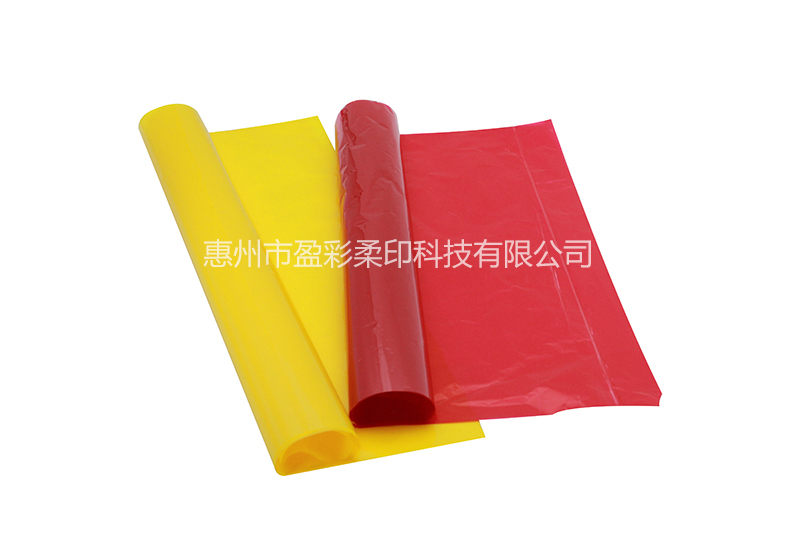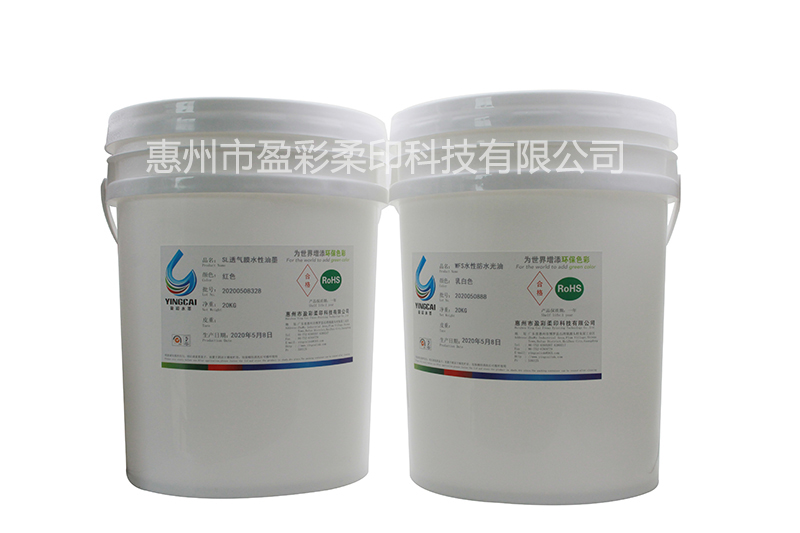Technical processing technology of water-based ink wastewater treatment:
1. Origin of water-based ink sewage
The treatment of water-based ink wastewater is still part of the water pollutants in the textile printing dyeing industry. Water-based ink wastewater is a new type of typical wastewater in the treatment of printing dyeing chemical wastewater. Its prominent features are high CODcr, high saturation difficult degradation . Once it enters the water quality, it will constitute a huge environmental pollution to the water environment management, seriously endangering people's life of stopping germination the biological diversity of nature. Water-based ink is mainly used in low-level printed materials such as books, magazines periodicals, low-regulation packaging printing positions such as corrugated cardboard, tobacco factory, winery, pharmaceutical factory, skin care products, children's toys company packaging design, milk beverage composite packaging paper Box other flexographic packaging printing range other packaging carton positions. During the whole process of manufacturing using water-based ink, due to the cleaning of machinery equipment, a certain amount of water-based ink sewage is generated. The origin of sewage in the application scope of water-based ink is mainly to replace printing ink, etc. The drainage pipes of packaging printing related machinery equipment must be cleaned, such as: sewage produced by washing sticks, washing tanks, washing barrels, cleaning operation rooms. Water-based inks can be divided into three types: water-soluble, alkali-soluble permeable. At this stage of research development, development design applications are more alkali-soluble printing inks.
(1) The docking materials of water-soluble printing ink include acrylic emulsion, hydroxyethyl methyl cellulose high pressure polyethylene arsenic chromone. This kind of butt material can be continuously melted by water, so the printing inks produced can only be used in places they do touch the water.
(2) Alkali-soluble printing ink, the docking material is an alkaline solution of acid-base epoxy resin, an appropriate amount of ammonium hydroxide is added. Both are oxidized to form a soluble epoxy resin salt. During the dry tedious process of printing ink, ammonia volatilizes makes the printing ink a chemical substance that does dissolve in water.
(3) The butt material of penetrating printing ink is tiny epoxy resin particles floating in water, which is called natural latex. The advantage of natural latex compared with melted epoxy resin is that natural latex can have a relatively high density low viscosity, can form a high-quality thin coating. Natural latex can include a very large polymer molecular structure. The coating is hard resistant. Abrasion, high temperature resistance, good adhesion; the disadvantage is that the packaging printing is difficult cannot be cleaned.

Water-based ink
2. Characteristics damage of water-based ink sewage:
Water-based inks comply with environmental protection regulations. The products are non-toxic, non-corrosive, non-irritating, non-flammable, non-explosive, have a good safety factor, are easy to transport, have high concentration, low usage, low viscosity, good packaging printing adaptability. , Practical characteristics, good color fastness to adhesion, dry boring fast, high moisture resistance, alkali resistance wear resistance after drying; the actual operation is very easy to adjust in the whole process of pre-press, post-press packaging printing, the printed matter looks after printing The imprints are rich, colorful, high smoothness, beautiful complex, complex printing patterns can also reach colorful levels, which can be printed with gorgeous high-gloss colors. The main environmental pollution in water-based ink industrial wastewater is water-soluble epoxy resin (vehicle carrier) of acrylic ester series products, cyclic organic compounds (dyes) containing colored functional groups alcohol phenyl thickeners with large relative molecular mass, During this period, acrylic emulsion was the main component of CODcr in sewage, accounting for more than 80%. There are many kinds of color pastes. During the period, organic pigments include acid salts, metal oxides carbon. Inorganic pigments include formamide color paste, phthalocyanine color paste, nitro color paste, lake color paste, restoration color paste, Various types of nitroso color paste, heterocyclic color paste, etc. In addition, there are more than ten kinds of modifiers such as solidity agent, defoaming aid, retarder, surfactant, additives so on. Water-based ink industrial wastewater is a kind of weakly alkaline, high-concentration, high-saturation, difficult-to-degrade chemical wastewater. The wastewater treatment difficulty coefficient is very large.
Water-based ink
Common wastewater treatment methods
1. Concrete air floatation machine-micro electrolysis-SBR processing technology
The source water CODcr is 2808.5mg/L the saturation is 1562.6 times. After the settlement of the sedimentation tank, the CODcr sludge load reaches 22.4% the saturation sludge load reaches 10%. After being resolved by the concrete air floatation machine, the CODcr sludge load reached 75.8%, the saturation sludge load reached 85.9%. Subsequently, micro-electrolysis made the COD sludge load reach 27.6%, the saturation sludge load reached 66%, which improved the biochemical properties of the sewage the actual effect of significant discoloration. It is solved by an SBR with a capacity of 140M3, a BOD5 capacity load of 0.18kg/m3, a charge discharge rate of 30%. It reaches 82.2% COD sludge load 60% saturation sludge load. The effluent CODcr reached 71.8mg/L, the sludge load was 97.4%, the saturation was 30.7 times, the sludge load was 98%. The practical effect of the solution of this project is remarkable. Although the removal of COD saturation mainly depends on the concrete air floatation machine, due to the use of micro-electrolysis processing technology, the biochemistry of sewage is improved, which in turn ensures the solidity of the SBR processing technology module. run.
2. Organic chemical air oxidation-concrete processing technology
The components of sewage mainly include water-based ink, tapioca starch surfactant. According to the selective test of the application of air oxidation decolorizer KMnO4, H2O2, NaClO, activated carbon; according to the selection test of coagulant: Y-13, FSH7, FCH3, FO4248, AN910SH the amount of mud its pH conditioning test. Obtained results: Under the good test standard of adding good reducing agent NaClO15g/L, good coagulant FCH31.3g/L, pH adjustment to 8.5 in the source water, the CODcr sludge load reached 95% the saturation sludge load reached 100% .
3. Ultrafiltration technology
After the sewage is based on three sets of ultrafiltration membrane components, the COD sludge load reaches 92%, the solid content in the extract reaches 99g/L (about 10%), the turbidity of permeable wetness is in the range of 0.14 ~ 0.4NTU. However, the sludge load of COD is closely related to the total number of soluble air pollutants. Soluble air pollutants cannot be removed by ultrafiltration technology.
4. Iron pin micro-electrolysis process
The source water was first adjusted to pH with HCl, the foundation settlement preparation treatment was obtained. The COD was reduced 6500 to 8500 Mg/L to 850 to 100 mg/L, the saturation was reduced impervious to 160 times. The effluent volume is determined by micro-electrolysis aluminum chloride. According to the main parameters of the micro-electrolysis main processing technology: pH value, iron sales volume, coke amount, reaction rate static data dynamic test, a good micro-electrolysis processing technology standard was obtained: pH value 4.0, iron sales volume 10%, coke The amount of use accounts for 16.65% of the filling material the reaction speed is 60min. The COD of the sewage is removed again by 50%, the saturation is removed by 90%. The source water is resolved in each stage of foundation settlement preparation iron micro-electrolysis. The COD sludge load is 85% the saturated sludge load is 95%. It has a good practical effect.
5. Concrete air floatation machine-touch air oxidation composition processing technology
Using the concrete air floatation machine-touch air oxidation composition processing technology, the water-soluble ink printing wastewater, dining room wastewater, domestic wastewater can be comprehensively solved to achieve a good practical effect. After removing large suspended solids, the water-based ink sewage is separated the concrete air floatation machine the solid-liquid separation equipment, then mixed with the canteen wastewater domestic wastewater, conditioned by anaerobic fermentation, the secondary microorganisms touch the air oxidation hydrolysis acidification tank. The effluent CODcr reached 68mg/L, the saturation was more than 10 times. The CODcr of the printing ink sewage source water is up to 182000Mg/L, the saturation is 4000 times. According to the coagulant basic aluminum chloride the coagulant sodium hydroxide polyacrylamide, the sewage is composed of an alum flotation machine. The sludge load reached 46.6%. The cleaned sewage of the air floatation machine with a daily discharge of 20 tons is mixed with 100 tons of canteen wastewater domestic wastewater (COD>366mg/L) per day, then subjected to anaerobic fermentation pretreatment conditioning, then the second-level microbes are touched. Air oxidation solution. Microorganisms touched the air oxidation tank in section A for 2.8 hours section B for 3.3 hours. The composition of this processing technology has the characteristics of solving practical effects being resistant to impact.
6. Organic chemical concrete processing technology
According to the common coagulant FeSO4·7H2O, FeCl3·6H2O, PAC, PFC, PAFC coagulant positive ion polypropylene fluorobenzene, polyacrylamide, chitosan, polydicyanamide pH adjustment mud adjustment Selection. Obtained a good standard for the concrete processing technology under the indoor temperature standard: FeCl3·6H2O is used as the coagulant, the amount of mud is 85mg/L, the concrete pH value is 4.0, a good coagulant is chitosan, the amount of mud is 0.85mg /L. After the solution, the COD of the source water was reduced 5600Mg/L to 620Mg/L, the sludge load was 85%; the saturation was reduced 240 times to less than 10 times, the sludge load was 98.5%, a good test actual effect was obtained.

Process selection
Ink printing wastewater has the characteristics of high COD, high saturation high suspended solids. Adopt "organic chemical inclined plate sedimentation tank-filter press dehydration-special type decoloring agent fading-sand carbon filter-reuse", according to the regulations that the sewage can reach the tap water of the cleaning circulation system after the wastewater treatment.
Huizhou Yingcai Flexo Printing Technology Co., Ltd.
(Mr. Li) 18576813888